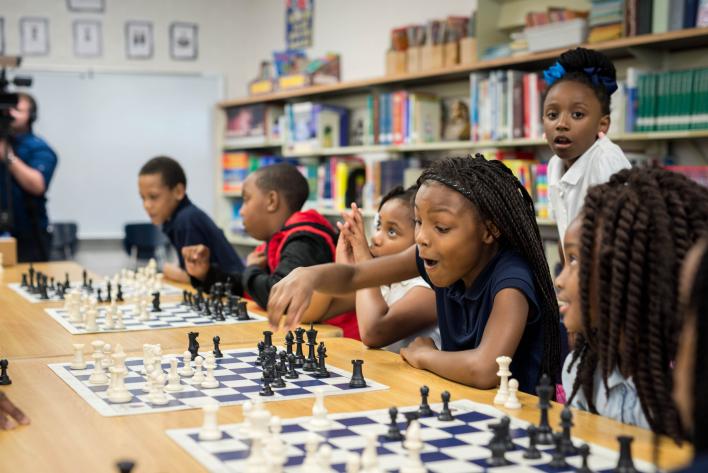
By Emily Sholtis & Anna Nicotera, Basis Policy Research.
Our synthesis of chess research demonstrated a link between students’ academic performance and chess instruction. Researchers Roberto Trinchero, professor at the University of Turin, and Giovanni Sala, a graduate student at the University of Liverpool, have taken the research a step further by investigating whether certain types of chess instruction are responsible for student gains.
In their 2016 article “Chess Training and Mathematical Problem-Solving: The Role of Teaching Heuristics in Transfer of Learning,” Trinchero and Sala studied a group of 931 Italian primary school students to see if they experienced a transfer of learning between the skills taught as part of chess instruction and those used in math classes. Transfer of learning refers to the students’ ability to apply skills learned in one domain to another. The researchers describe two types of transfer of learning: near and far. They find that chess is an example of a far transfer of learning meaning it is more difficult to extend skills learned playing the game to other areas.
Students in the study were split into three groups. The first was a control group where the students received no chess instruction. The second was a treatment group who received chess instruction from their classroom teachers during the school day. The third was another treatment group who learned chess, also during the school day, from experienced chess instructors who had been trained to use heuristic strategies. Heuristics are quick, simple problem-solving strategies that are often employed to handle ill-defined problems. Trinchero and Sala hypothesized that students who learned chess with heuristic strategies would be more likely to experience a transfer of learning that would result in better performance on a mathematics problem-solving assessment.
After only 15 hours of training, the students who learned heuristic strategies experienced significant growth in their mathematical problem-solving skills. Interestingly, neither the control group who did not participate in chess nor their peers who were exposed to chess through classroom instruction showed significant improvement.
Since chess has a far transfer of learning, exposing students to chess may not be enough to impact student learning in content areas, like math. However, the research suggests that there are instructional strategies that can be used to teach chess that will facilitate students making connections across subject areas. These findings are valuable, and could have an important impact of the development of chess curriculums and the implementation of in-school programming moving forward.


